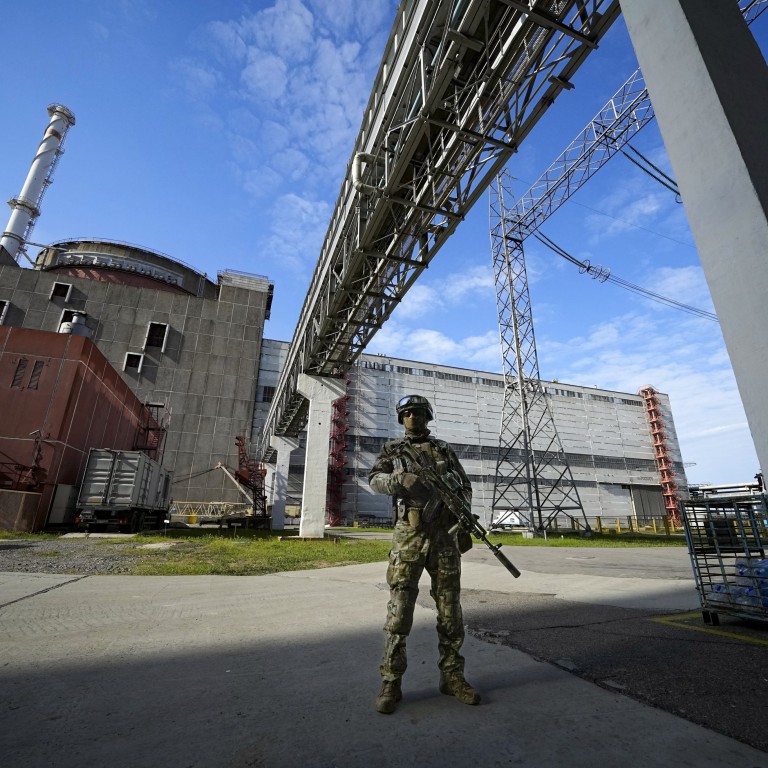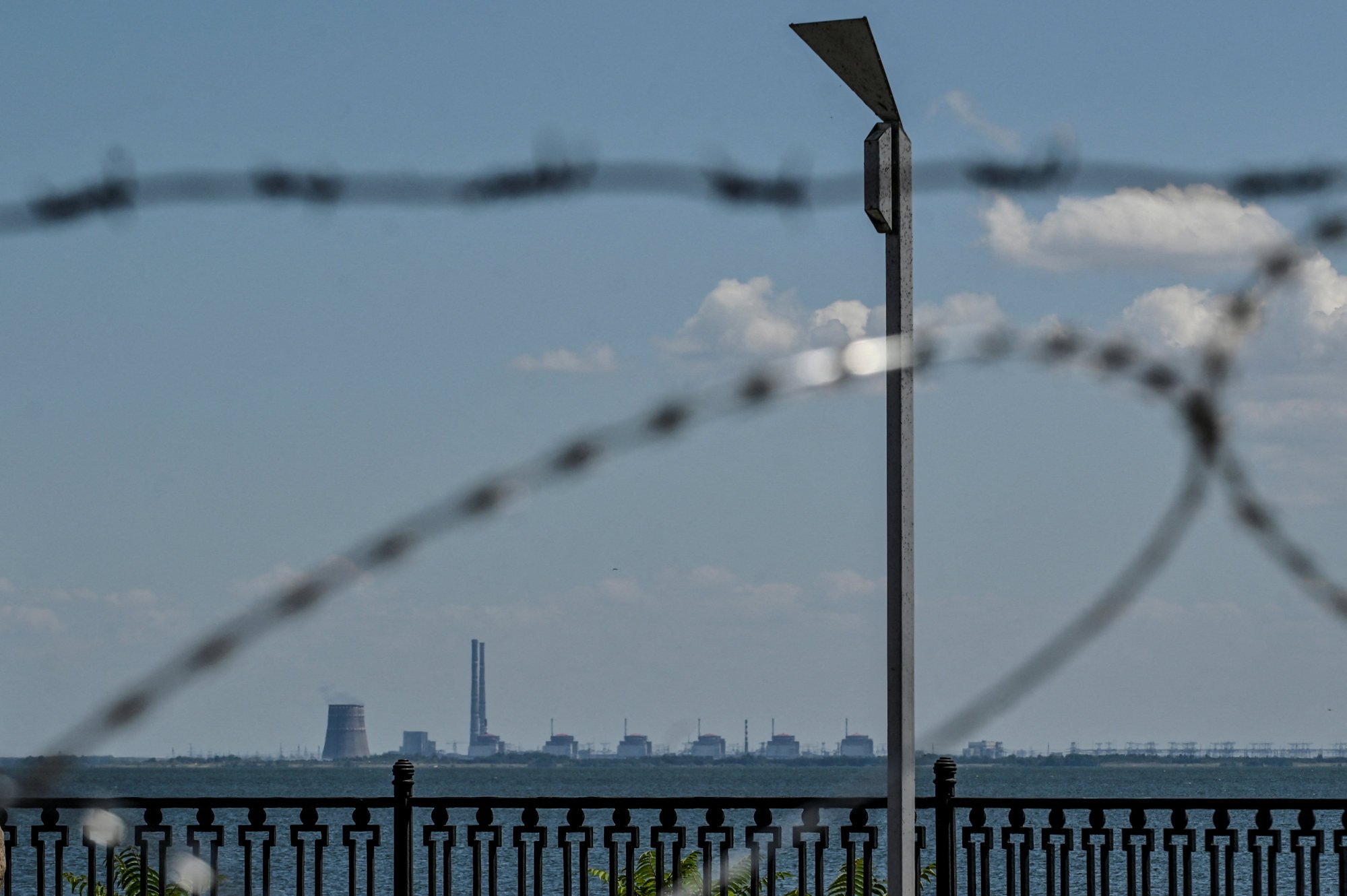
US accuses Russia of using Ukraine’s Zaporizhzhia power plant as ‘nuclear shield’
- Russia reportedly using Ukraine’s Zaporizhzhia nuclear plant as a military base to fire artillery at Ukrainian targets
- Moscow officials said there were a limited number of Russian servicemen there to ‘ensure safety and security’
The United States has accused Russia of using Ukraine’s biggest nuclear power plant as a “nuclear shield” by stationing troops there, preventing Ukrainian forces from returning fire and risking a terrible nuclear accident.
Secretary of State Antony Blinken said the United States was “deeply concerned” that the Zaporizhzhia plant, which Russia was accused of firing shells dangerously close to in March, was now a Russian military base used to fire on nearby Ukrainian forces.
“Of course the Ukrainians cannot fire back lest there be a terrible accident involving the nuclear plant,” Blinken told reporters after nuclear non-proliferation talks at the United Nations in New York on Monday.
Russia’s actions went beyond using a “human shield” Blinken said, calling it a “nuclear shield”.
Russia’s delegation strongly rejected Blinken’s contention that Russia was using the Zaporizhzhia plant as a military base, saying a limited number of servicemen were there “to ensure safety and security at the power plant”.
The Zaporizhzhia plant is the largest such plant in Europe, with six nuclear reactors. There are three other active nuclear power plants in the country.
Russian troops intend to capture Zaporizhzhia, Zelensky says
The capture of the Ukrainian nuclear power plant in March caused international outrage, as the fighting led to a fire on the site that raised fears that the integrity of the nuclear reactors could be threatened.
Russian forces have been firing at Nikopol, a Ukrainian town across the river from the plant, since mid-July, according to The New York Times on Monday.
“How can we respond?” Serhiy Shatalov, a Ukrainian colonel asked The Times. “This is a nuclear site.”
Ukraine has made some limited attempts to attack the site, including precision strikes with kamikaze drones, according to a tweet from Ukraine’s defence ministry.
At the New York talks, Ukraine’s Deputy Foreign Affairs Minister Mykola Tochytskyi said “robust joint actions are needed to prevent nuclear disaster” and called for the international community to “close the sky” over Ukraine’s nuclear power plants with air defence systems.
Rafael Grossi, director general of the International Atomic Energy Agency, warned that at the Zaporizhzhia nuclear plant “the situation is becoming more perilous by the day”. He he urged all countries to help make possible his visit to the plant with a team of IAEA safety and security experts, saying his efforts for the past two months have been unsuccessful.
Russian President Vladimir Putin’s February 24 invasion of Ukraine has sparked the biggest conflict in Europe since World War II, killing thousands, displacing millions and leaving large parts of Ukraine in rubble.
UN chief warns world is one step away from ‘nuclear annihilation’
The war has also caused a global food crisis, with Russia and Ukraine producing about a third of the world’s wheat, while Western sanctions on Russia, a major energy provider to Europe, have caused a global energy crisis.
After failing to capture the capital Kyiv early in the war, Russia now aims to capture the eastern Donbas region, made up of Donetsk and Luhansk, partially occupied by Russia-backed separatists before the invasion, and capture more of the south, having already annexed Crimea from Ukraine in 2014.
Ukrainian presidential adviser Oleksiy Arestovych told media about 22,000 Russian troops were preparing to advance on the cities of Kriviy Rih and Mykolayiv, where a “sufficiently large” Ukrainian force lay in wait.

In Kherson region, which is mostly under Russian control, Ukrainian troops had liberated some 50 towns, said Yuri Sobolevsky, deputy head of the ousted Kherson regional council.
“Russian troop in Kherson region are sustaining considerable losses,” Sobolevsky wrote on Telegram.
Reuters was unable to verify the battlefield report.
‘Relief for world’ as first Ukraine grain ship leaves Odesa
Serhiy Gaidai, governor of Luhansk region, which is nearly all under Russian control, said foreign fighters were arriving to help Russian forces.
“We have noticed that more and more private military companies coming into the area – the Wagner group,” Gaidai told Ukrainian TV, adding that these irregular forces were motivated by “money and looting”.
Russian private military firm Wagner has likely been given responsibility for sectors of the front line in eastern Ukraine, possibly as Russia is facing a shortage of infantry, Britain’s Ministry of Defence said last week.
Gaidai said partisans were destroying infrastructure, including gas and water networks, in battered Luhansk towns to slow Russian forces.
Meanwhile, United States announced a new tranche of weapons for Ukraine’s forces, including ammunition for increasingly important rocket launchers and artillery guns.
The new US$550 million package will “include more ammunition for the high mobility advanced rocket systems otherwise known as HIMARS, as well as ammunition” for artillery, National Security Council spokesman John Kirby told reporters.
Russia’s image in Asia remains ‘snow-white’, Moscow’s Singapore envoy says
The assistance includes 75,000 rounds of 155mm artillery ammunition, a statement from the Pentagon said.
This brings the total of military assistance committed to Ukraine since President Joe Biden took office to more than US$8.8 billion, according to the Pentagon.
Previous weapons assistance from Washington to Kyiv has included counter-artillery radars, Javelin anti-tank missiles, Soviet-made helicopters, shells and light armoured vehicles.
Reuters, Associated Press and Business Insider
